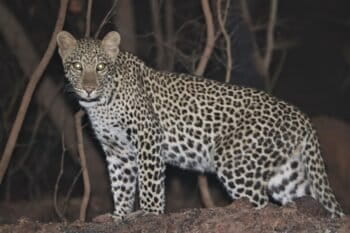The green turtle, found across the world’s oceans, is recovering after decades of decline, according to the latest IUCN Red List assessment. The species has been reclassified from endangered to least concern.
“I am delighted,” Brendan Godley, a turtle expert from the University of Exeter, U.K., told Mongabay. “It underlines that marine conservation can work, there is hope, and we should rightly celebrate it, sharing some ocean optimism.”
Historically, humans hunted green turtles (Chelonia mydas) for their meat and eggs, decimating their populations. Even after hunting declined, the species continued to suffer: from entanglement in fishing nets, degradation of nesting beaches and ocean habitats, pollution, diseases, and climate change.
However, the global population has increased by roughly 28% since the 1970s, following decades of conservation efforts. This is largely thanks to legal protections against international trade and direct hunting, and conservation measures including those that protect nesting beaches and the use of turtle excluder devices to keep them from getting entangled in fishing gear.
The latest assessment, however, cautions that while populations have increased as a whole worldwide, regional assessments show that several subpopulations are still threatened or declining. For example, subpopulations in the North Indian Ocean are classified as vulnerable, while those in Central South Pacific are listed as endangered. Subpopulations in the North Atlantic are listed as least concern, but are showing signs of decline.
“In the North Atlantic, although nesting numbers are still higher than when scientific monitoring and active conservation began, the overall decline is principally because the largest breeding site in Costa Rica, after decades of increase, has exhibited lowered nesting numbers in recent years — a trend that is worthy of further investigation,” Godley said.
He added that an overall listing of least concern doesn’t mean we shouldn’t be concerned about green turtles, but that we can currently be less concerned for this species than for others at greater risk of extinction in the near future.
“Many sea turtle conservation scientists have suggested that [green turtles] might best be considered as part of a group of ‘Conservation Dependent’ species in that, if they were not subject to any conservation, they might quickly decline,” Godley said. “This is, in part, evidenced by the fact that they have not increased uniformly across the global ocean.”
The IUCN Red List assessment, too, emphasizes the need for continued conservation support.
“Sea turtles cannot survive without healthy oceans and coasts,” Roderic Mast, co-chair of the IUCN’s Marine Turtle Specialist Group, said in a statement. “Sustained conservation efforts are key to assuring that this recovery lasts.”
For now, the green turtle’s status change is seen as a major conservation victory. “To undertake a Red List Assessment of such a globally distributed species is an immense and challenging job,” Godley said. “We should applaud the teams from across the globe for their commitment to turtles and marine conservation.”
Banner image of a green turtle by Bernard DUPONT via Wikimedia Commons (CCBY-SA2.0).





